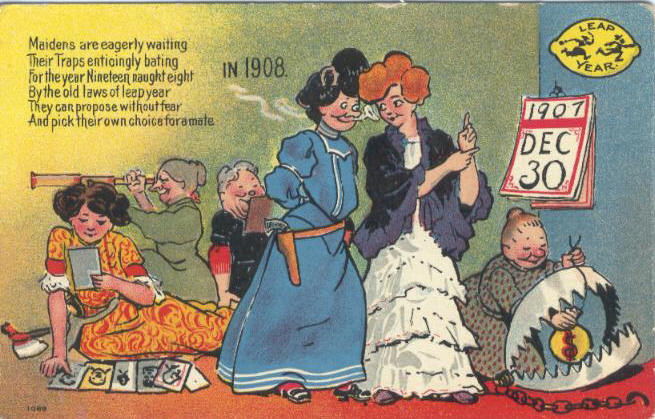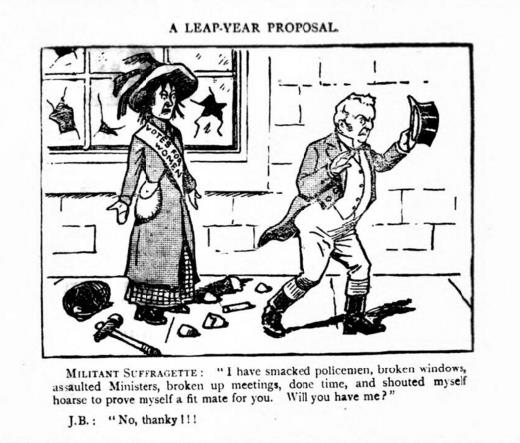Leap Year: The Irish Tradition You Will Not Be Able To Say No To
2024 Is a bliain bhisigh, which is Irish for a leap year. Read more to find out what this means to you and your love life!
So Valentine’s Day came and went by pretty fast. Although the most romantic day of the year is over, we can assure you love is still in the air!
Especially in Ireland, and in the year 2024. Why? Keep reading, and you will find out.

You see, 2024 is a leap year, counting not just the usual 365 days, but 366. This means we will very soon have the Leap Day, and it’s usually a February 29th!
This occasion arises only once every four years, and has therefore always been considered as quite the affair. Especially in the old days. A tradition was born here in Ireland, that has ever since allowed the subversion of traditional gender roles once every four years (though for 24 hours only).
It goes like this: every February 29th, ladies can propose to their lovers and the gentlemen must say yes. Now, before you run and get on your knee for that cute crush of yours, let’s have a closer look at the origins of such a revolutionary tradition.
Origins of the tradition
It all (allegedly) began with two of the most famous Irish saints, Saint Patrick and Saint Brigid of Kildare. The two had a discussion once, back in the Ireland of the 5th century.
Saint Brigid was complaining about how long women usually had to wait for their suitor to ask their hand in marriage. Eventually, Saint Patrick decided to strike a deal with her, granting all women a chance every four years to be the ones to propose first.
There is also a version of the legend that suggests that at that point, Brigid fell at Patrick’s feet and asked for his own hand in marriage. But we are not too inclined to believe that, seeing as they had quite the age difference (Saint Brigid was only ten years old when Saint Patrick died in 461 AD!)
In any way, the legend says that Patrick kindly refused, and offered a silk gown as payment in return.

What if they said no?
This legend then became history, when in 1288 Scottish royalty passed a law that gave right to all women to ask for a man’s hand in marriage on each February 29th. The day was also known as “Bachelors’ Day” for this reason. He could only get out of it by paying one of various fees: a kiss, a silk gown, sometimes a pair of silk gloves. Or 12.
12 pairs of silk gloves were actually specified in many Northern European societies as the proper fee to be paid by the man, if he refused the kind offer. Apparently, gloves were considered a much more functional reparation than gowns, seeing as ladies could hide the embarrassment of not having a ring on their finger – while also being very fashionable at the same time!

Modern times
As time passed by, people all over Europe began to appreciate the practice. The Leap Year tradition therefore became quite the rage. So much so, that there are plenty of records of couples getting married because of it. Thanks to the Internet, we can find plenty of videos of Leap Year proposals (some less successful than others). There is also a movie about it, set in our beloved Dublin, starring 6 times Oscar Award nominee Amy Adams!
And now you know how the story goes!
Ladies: feel free to pop the questions when February 29th comes. Gents, start arranging for those 12 pairs of silk gloves if you just don’t feel like committing right away. But remember, everything will go back to normal once the day is over, too! And with it comes an end to your opportunity of marriage. Your next chance at love might be in four years time…so don’t wait too long!
written by Maria Anna Saija
Share This Blog, Choose Your Platform!
Check out our other blog posts from section Irish Traditions!
Top Things to Do This Christmas 2024 in Ireland: A Festive Activity Guide
Exploring the Heart of Irish Christmas: An Irish Christmas [...]
MAY you discover ancient Irish traditions?
MAY you discover ancient Irish traditions? Whether you are [...]
It’s Time to Go Green: Happy St Patrick’s Day!
It’s Time to Go Green: Happy St Patrick’s Day! [...]
Leap Year 2024: The Irish Traditional Proposing
Leap Year: The Irish Tradition You Will Not Be [...]
A Very Irish Christmas: A List of The Best Irish Christmas Traditions
A Very Irish Christmas: A List of The Best [...]
Pancake Tuesday: 7 Fun Facts About Pancakes
Pancake Tuesday: 7 Fun Facts About Pancakes Carnival [...]






